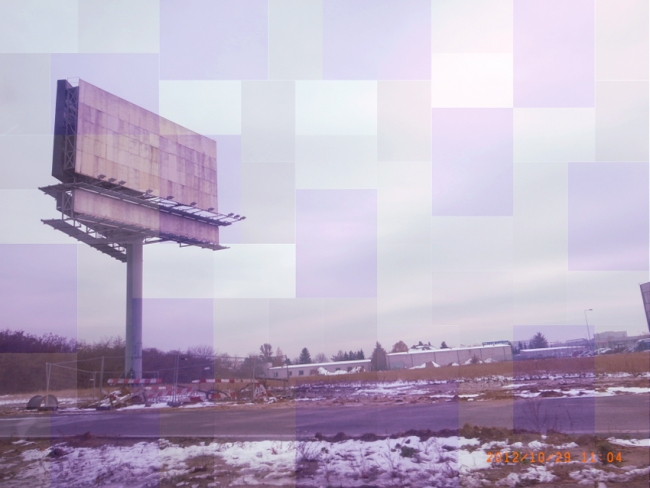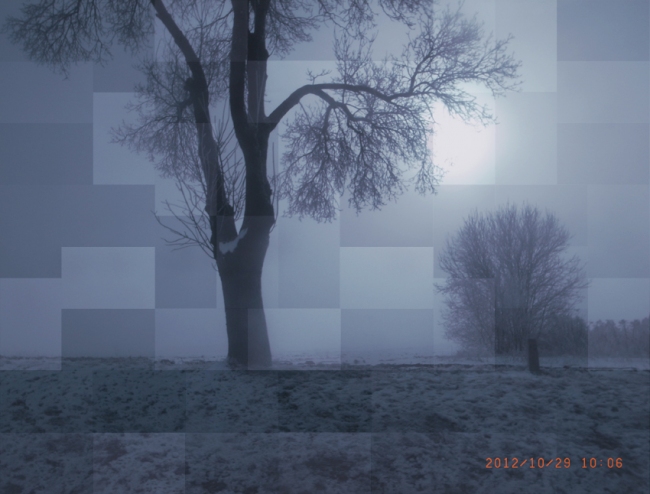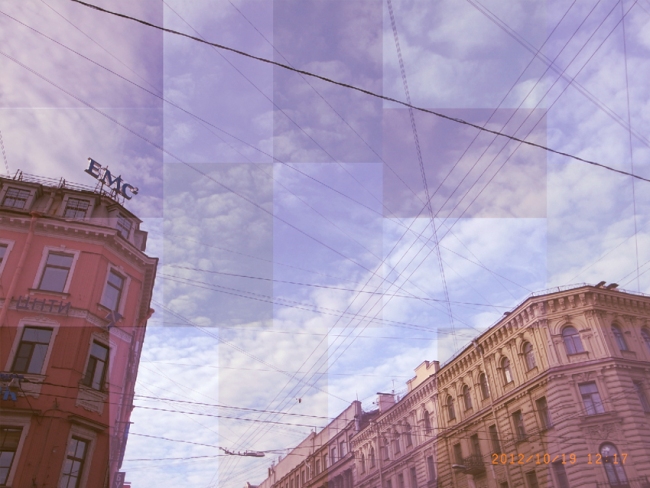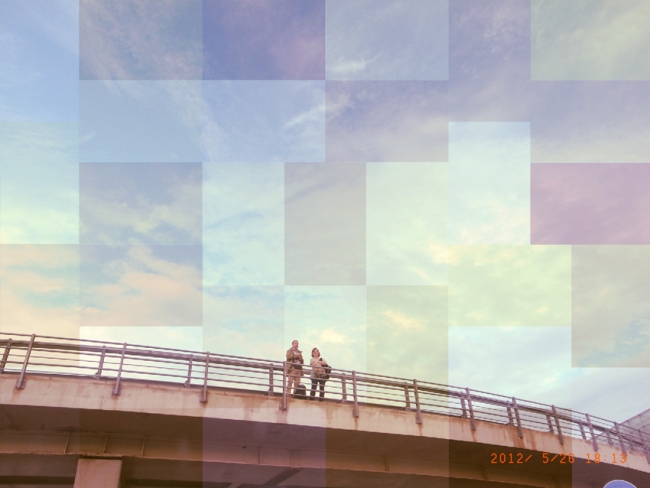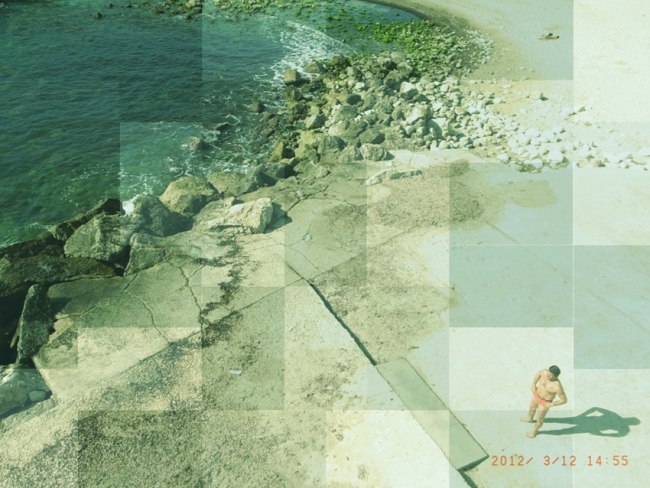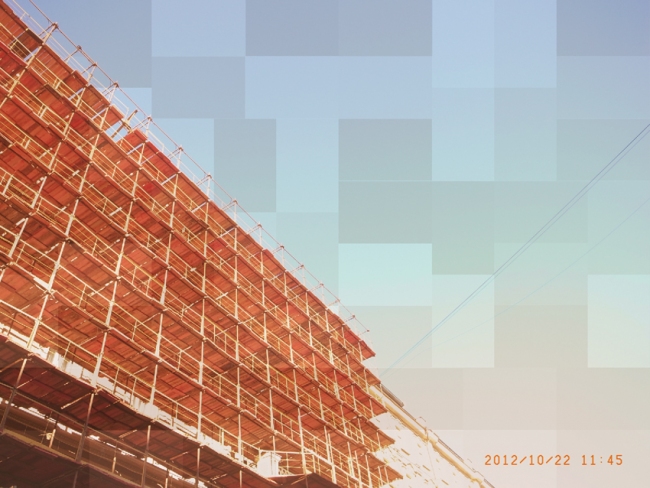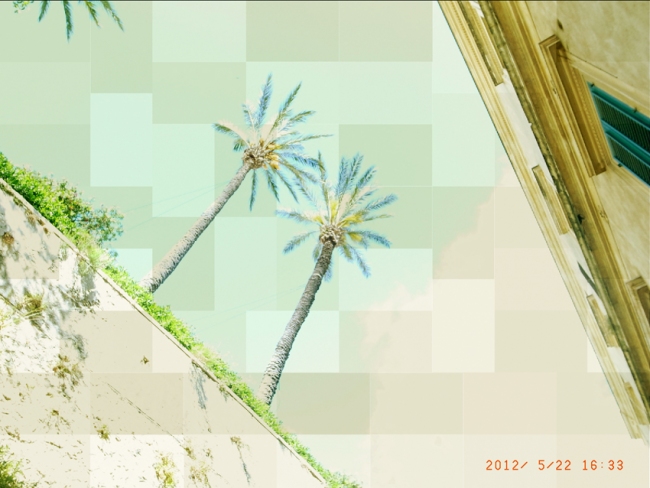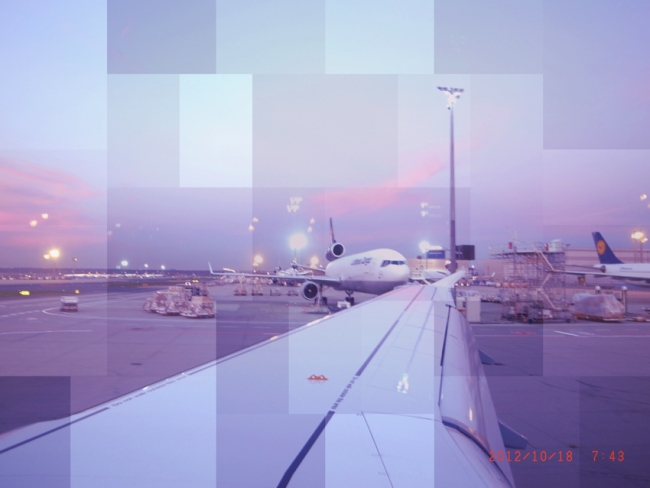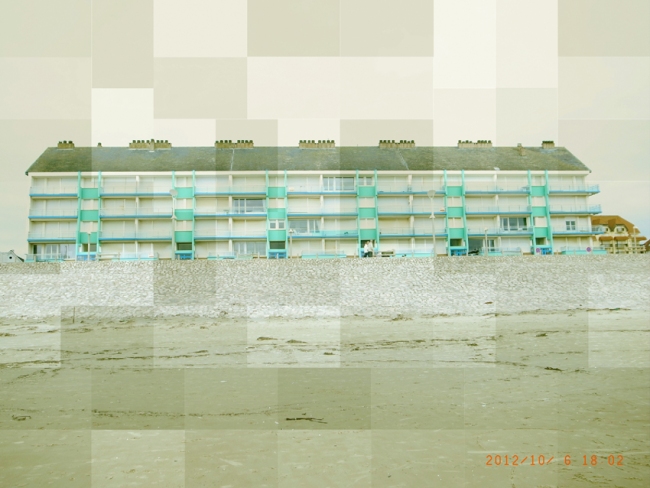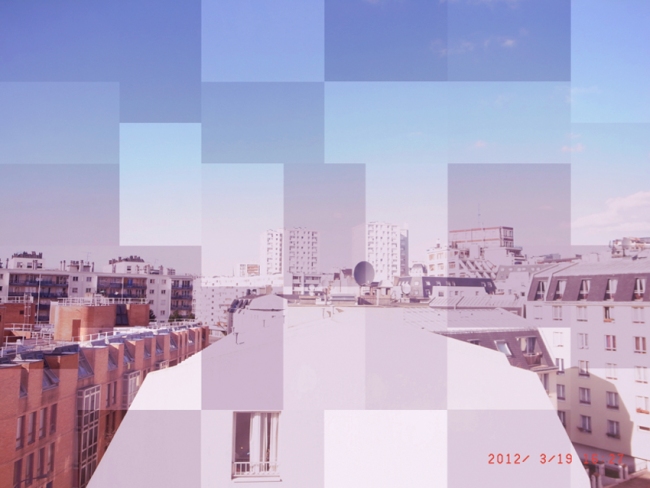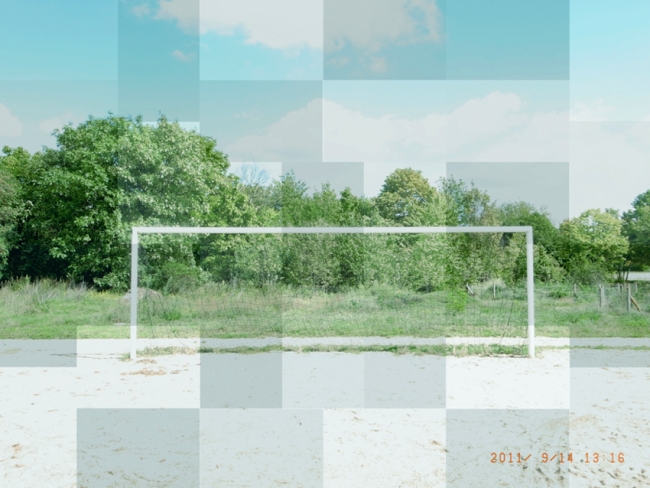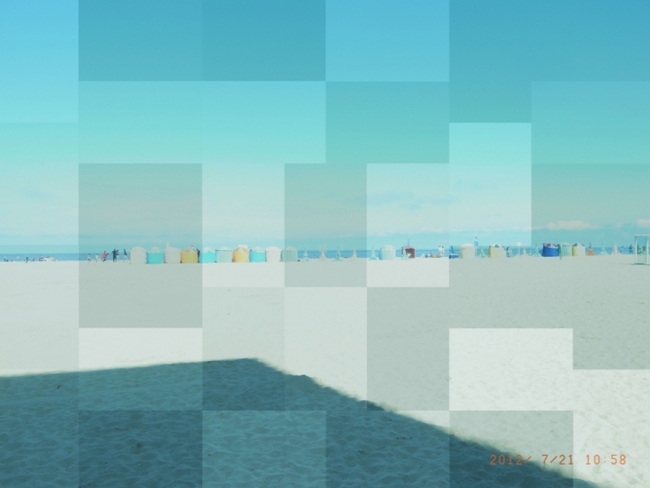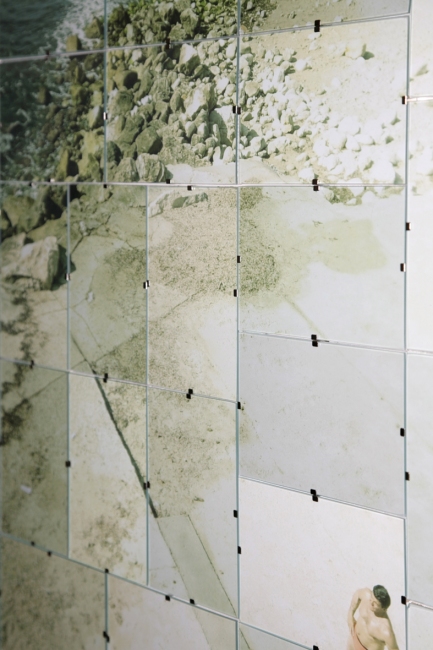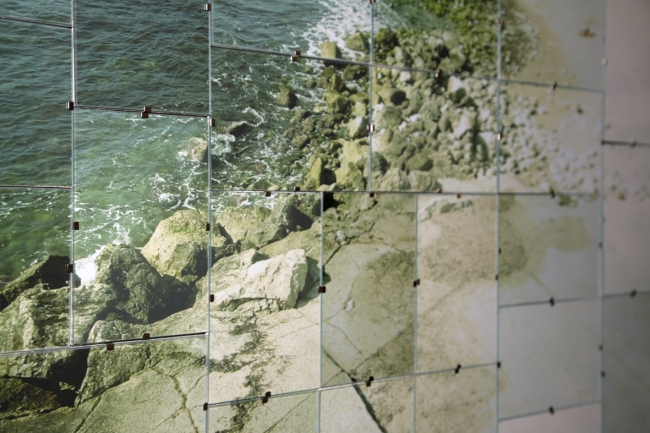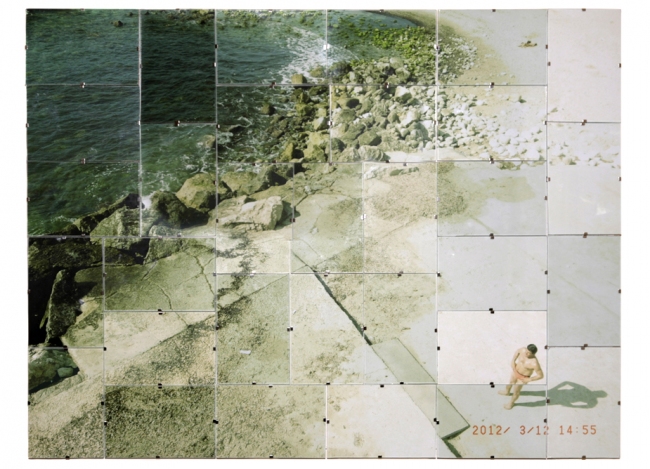Patchwork
2013
tirages lambda, techniques mixtes
150 X 110 cm – ed 4 + 2 E.A
80 X 60 cm – ed 8 + 2 E.A
Des scènes prises en extérieur, en plongée, contre-plongée ou encore de face intègrent le sujet dans le décor qui l’entoure.
Les photographies proposent des couleurs nuancées, qui quadrillent la vue d’ensemble en petites images telles des cartes postales. Les mises sous verres génèrent alors un visuel proche de la mosaïque. Chaque parcelle d’image saccadée, pourtant indissociable de la vue d’ensemble, valorise son individualité. Elles renvoient au souvenir, à cette accumulation de sensations et de ressentis qui réunie façonne notre mémoire.
De part son aspect accessible et bas de gamme, la mise sous verre joue avec bienveillance sur le moyen d’exposition commun à tant de foyers, où les photos de famille et de vacances sont accrochées au mur directement entre deux verres.
Le patchwork est alors accessible à tous. Par le biais de photographies du quotidien ce travail fait revivre l’émotion de notre propre vécu. Ces images capturées de façon journalière, semblent habillées de poésie et de voyage, où rêveur, chacun y trouve plaisir à faire renaître son imaginaire.
Outdoor scenes are shot from a variety of angles in order to contain the subject within its surroundings.
The photographs feature a nuanced array of colours, dividing one’s view of the whole into a grid of smaller, postcard style images. Their placement under glass creates a visual effect resembling mosaic. Each disjointed image-fragment, however indissociable from one’s view of the whole, highlights the individual value of the part. They are suggestive of mementos, taking us back to the sensations and feelings from which memory is formed.
Besides its accessible, low-end aspect, the use of glass indicates a well meaning embrace of domestic exhibition strategy: the home in which family photos and holiday snaps are placed in simple glass frames mounted directly on the wall.
The notion of framing within the frame is substituted for that of the image within the image. According to this logic, photography is conceived as the recording or staging of the real. The mosaics would be like puzzles, therefore, with each an attempt to understand or reconstruct photography. This reading of the image is both proper and personal, allowing each of us to claim ownership to some part of Roquigny’s work.
Patchwork is therefore accessible to all. The photographs’ bias towards the every day sees the emotion of lived experience rekindled. Captured, one senses, as part of the daily routine, the images are imbued with poetry and adventure. Daydreaming, one delights in allowing the imagination to be reborn.
